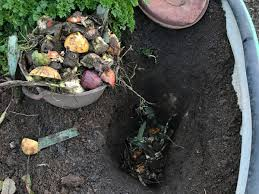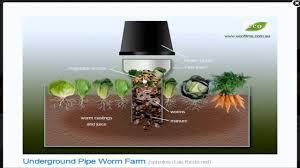Materials You’ll Need:
- Container: A PVC pipe (approximately 30cm long) or a small bucket with a tight-fitting lid.
- Drill: An electric drill with a 3/16” or ¼” drill bit.
- Finishing Tools: Sandpaper for smoothing drilled holes.
- Worm Bedding: Organic materials such as shredded newspaper, paper bags, or dried leaves.
- Composting Worms: Red Wigglers or Canadian Nightcrawlers, readily available from bait shops or online suppliers.
Step-by-Step Instructions
1. Select the Perfect Location
- Choose a shady, cool spot in your garden.
- Ensure the area is above the water table to avoid potential flooding during heavy rains.
2. Prepare the Worm Tower
- PVC Pipe Option: Cut the pipe to the desired length (30cm is typical).
- Drill 5mm holes around the pipe or bucket, stopping halfway up to allow aeration and drainage.
- Use sandpaper to smooth the edges of the holes to prevent harm to the worms.
3. Install the Tower
- Dig a hole deep enough to bury the pipe or bucket, leaving only a few centimeters visible above the ground.
- Position the container with the drilled holes facing downward.
- Backfill the hole with soil to secure the tower in place.
4. Add Bedding and Worms
- Start with a layer of organic bedding like shredded paper, newspaper, or dried leaves.
- Introduce 250-300 composting worms into the tower.
- Gradually add kitchen scraps, avoiding items like citrus, onions, garlic, dairy, and meat that may harm the worms.

5. Maintain the System
- Regularly feed the worms with organic matter, ensuring the bedding stays moist but not overly wet.
- Watch for worm tea (a nutrient-rich liquid) collecting at the bottom, which can be used as a natural fertilizer.
- If ants become a problem, consider remedies such as moistening the soil, sprinkling cinnamon, or using vinegar.
6. Feed Strategically
- Offer a mix of green waste (e.g., fruit and vegetable scraps) and brown materials (e.g., shredded paper or dried leaves) to balance the compost.
- Avoid overfeeding, particularly during the first few months, to allow the worms to adjust.
7. Cover the Tower
- Use a terracotta saucer or a PVC cap to cover the top of the tower. Secure it with a rock to deter rodents and other pests.
8. Monitor and Adjust
- Keep an eye on worm activity, adjusting moisture levels and feeding as necessary.
- Worms will naturally regulate their environment, processing organic waste efficiently and enriching the soil.
Why Build an Underground Worm Farm?
By following this guide, you can create an eco-friendly composting solution that reduces kitchen waste while improving garden soil quality. Worm farms are low-maintenance, sustainable, and provide natural fertilizers to help your plants thrive. Whether you’re a gardening novice or an experienced green thumb, an underground worm farm is a valuable and rewarding addition to your garden.
This guide not only simplifies the process but also emphasizes the benefits of integrating sustainability into your gardening practices.
